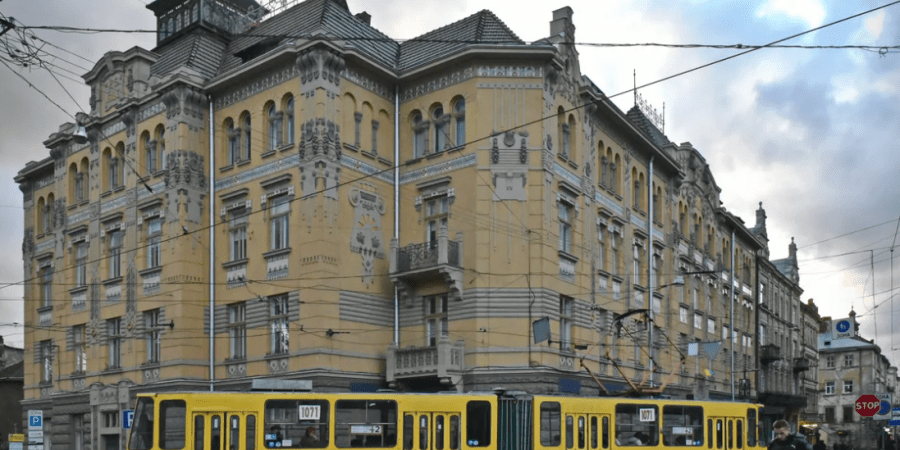From Lokalna Istoriya – text and photographs by Yuliya Korytska-Holub, original in Ukrainian
The building of the Dnister Insurance Company, situated at the corner of Pidvalna and Ruska streets in Lviv, has been considered a gem of the city since its inception. Recent renovations have only heightened its elegance, though not without its share of criticism. This is the tale of an institution designed to stir the hearts of conservative Galician Ukrainians. The construction of its main office was overseen by the legendary Lviv architect Ivan Levynskyi.
“‘Rus’’ Went Bankrupt”
At the end of the 19th century, the Galician parliament passed a law mandating compulsory fire insurance for private houses. However, many conservative Galicians, especially Ukrainian peasants, were very reluctant to protect their property in this way. In 1891, Dr. Damyan Savchak observed that only 5% of smaller estates and up to 12% of larger ones were insured. He proposed creating a Ukrainian insurance company, the profits of which would benefit the community: “If we were to assume that ‘Dnister’ did not exist, then all its members would have to insure their property with foreign insurance companies. In such a case, it would be at least be our credit that, thanks to ‘Dnister,’ several tens of millions of crowns of Ukrainian money would remain in Ukrainian hands. Otherwise, it would have gone to foreigners and been lost to our people.”
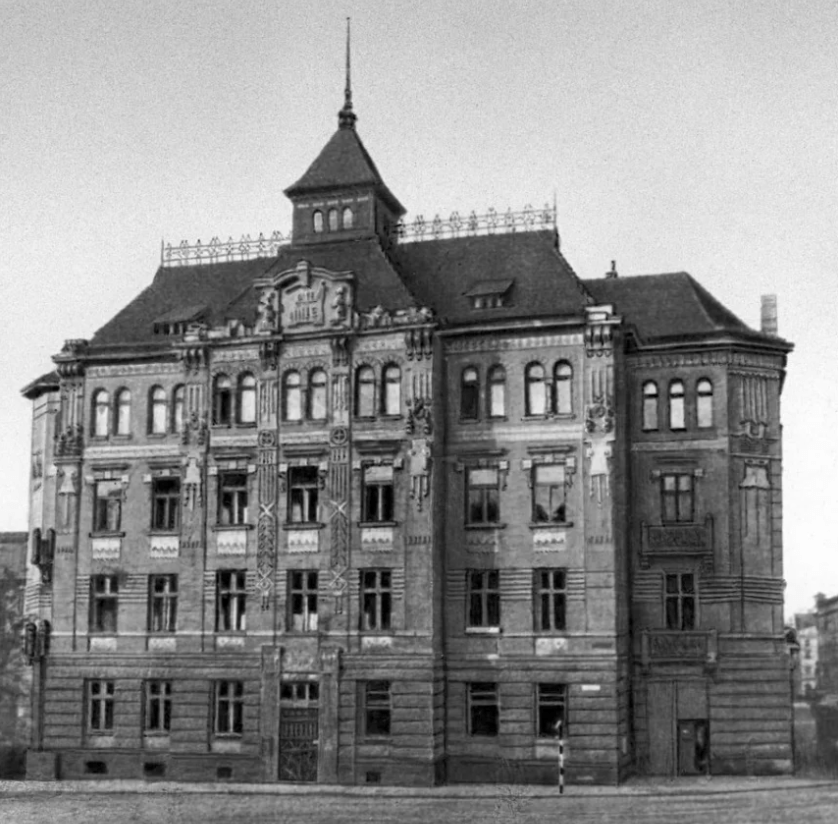
The first attempt to obtain a concession took eight years due to opposition from Russophile and Polish officials, ultimately yielding no results. The second attempt was supported by the Governor of Galicia, Kazimierz Badeni, because he believed that the founders would not be able to raise the initial capital of 50,000 gulden or sustain operations for long. Such a risk really did exist, so the option of naming it “Rus’” was abandoned to avoid the ominous: “‘Rus” went bankrupt.” But the official was mistaken – 350 depositors were quickly found, including the future Metropolitan Andrey Sheptytskyi.
On June 15, 1892, the Mutual Insurance Society Dnister began its work. Each client received a rectangular metal medallion with the coat of arms of the Galician Ruthenians – a lion scaling a rock – and the inscription “Dnister,” to be affixed to the insured building. The most significant contributions to the establishment of the society were made by Dr. Stefan Fedak, Vasyl Nahirnyi, and Dr. Damyan Savchak. All of them were educated and active professionals for whom helping their compatriots and their economic upliftment were a priority. The results achieved by the 25th anniversary also demonstrate a conscious contribution to the spread of the Ukrainian language among public institutions: “The main area of operation is Eastern Galicia. Over 96% of members belong to the Ukrainian nationality. Management and staff are purely Ukrainian. The business language is Ukrainian. During its entire existence, the Society sent about 4 million Ukrainian policies and over 2 million documents, letters, and postcards in the Ukrainian language, including several tens of thousands of Ukrainian submissions to courts, governments, and authorities. In this way, the Society significantly contributed to the spread of our language and writing, especially since ‘Dnister’ consistently fought to defend the rights of Ukrainians in all areas of public life with state and autonomous authorities and governments of all categories.”
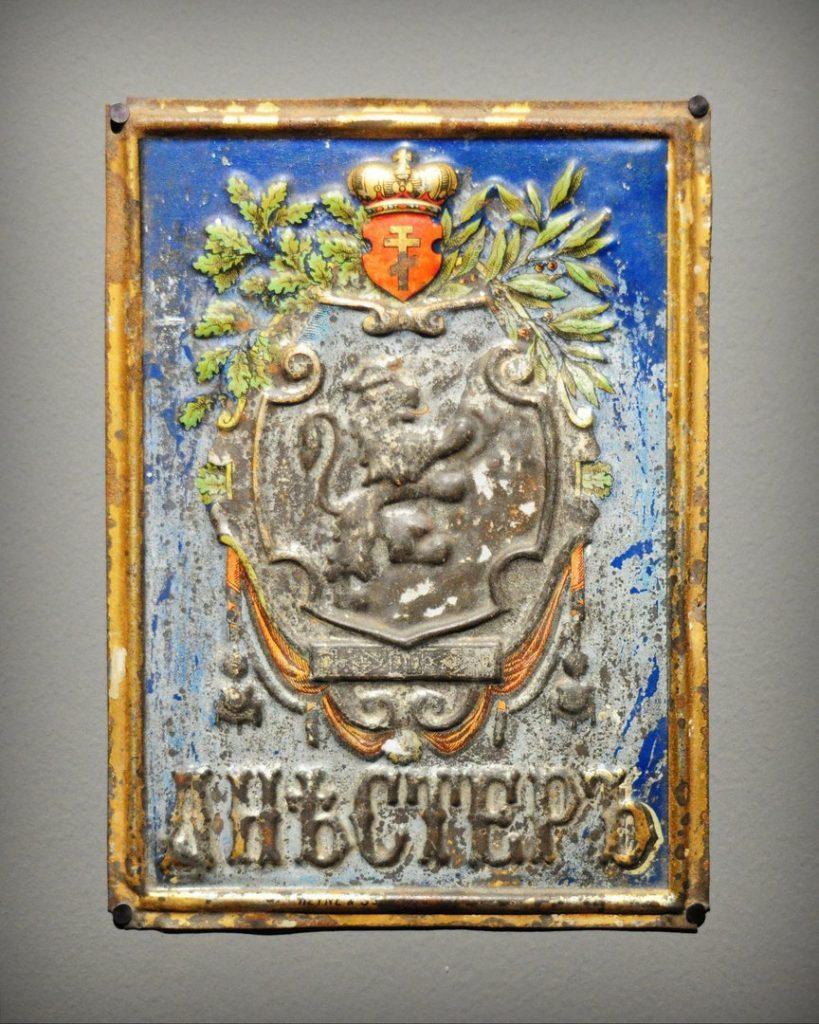
Patriotic Building
Historian Ihor Melnyk found that the institution changed its main office location several times. Initially, it was located at 11 Valova Street, in a building that today is nonextant – in its place is a neo-Gothic structure with sculptures of knights. Then it moved to the premises of the Prosvita society at 10 Rynok Square. Later, Dnister bought three buildings at the corner of Pidvalna and Ruska Streets – one of them belonged to Prosvita, and the other two to Rebeka and Samuel Zeltzer. These structures were dismantled to erect a new building for their needs.
Construction began in 1905, which is mentioned on the facade according to the Cyrillic numbering system as “РБ ~АЦЕ.” “РБ” is deciphered as Року Божого (Year of God.) ~A, Ц, and E are numbers 1000, 900, and 5, which add up to 1905. When looking for contractors, preference was given to Ukrainians. The job was delegated to Ivan Levynskyi’s firm, who then made decisions regarding those responsible for each specific stage.
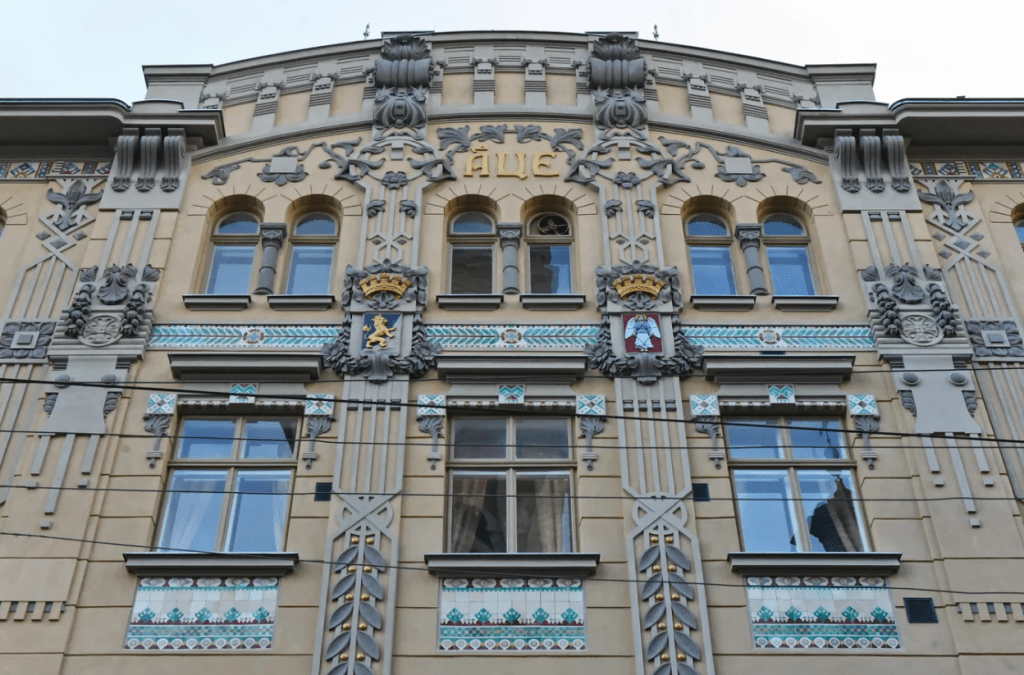
The design and solution of the facade was executed by Tadeusz Obmiński. The majolica cladding with folk ornaments was done by Oleksander Lushpynskyi. Engineering and construction coordination were handled by Fylymon Levytskyi. Artistic blacksmithing was from Mykhailo Stefanivskyi’s workshop. An interesting detail is the monument to the first director of Dnister, Yaroslav Kulachkovskyi, at the Lychakiv Cemetery, adorned with candlesticks in the Hutsul style, also by Stefanivskyi. Teodor Geleta was responsible for the painting work. Yuriy Biriulov, a historian of architecture and art, believes that Geleta was the author of the plafond on the additional staircase. On the other hand, the fragment of ornamental paintings in the Hutsul style, which was uncovered by restorers, is more complex and was likely made by Oleksander Lushpynskyi. The stoves, floor tiles, and carpentry were provided by Levynskyi’s factory. Most installation companies were from Lviv. To this day, on the downspouts, through layers of paint, the stamps of W. Podhorodecki Lwów are visible. Only the central heating system was entrusted to Viennese specialists.

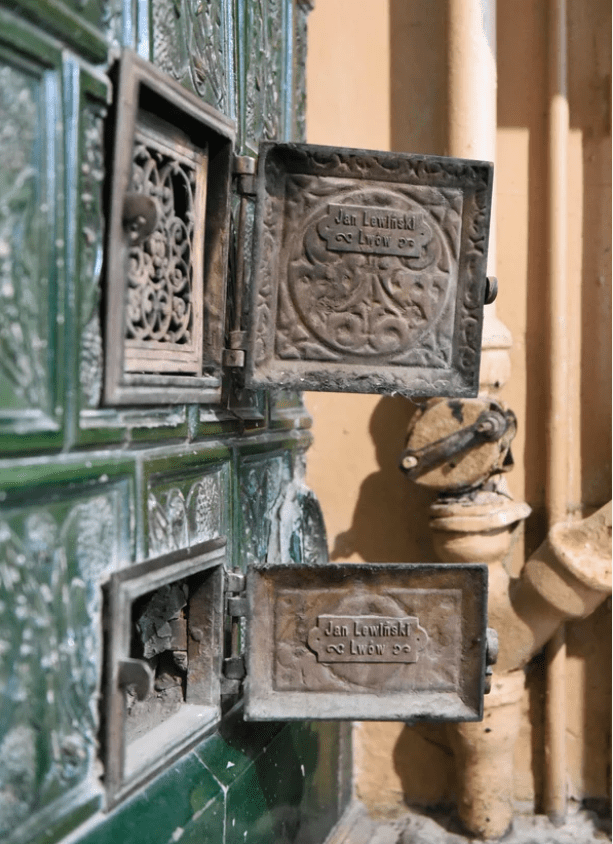
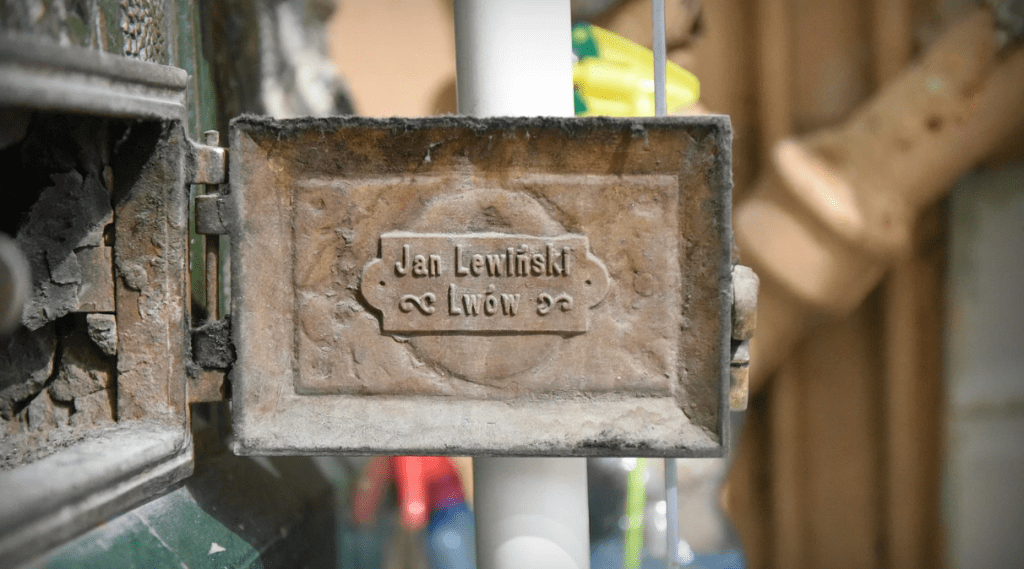
For Provincials and Foreigners
“When our citizens come to Lviv for the first time from remote areas of the province, they consider it their duty to visit not only the Prosvita building but also the Dnister building, which they know from photographs. But even when prominent foreigners arrive to get acquainted with our life, we also show it to them as our representative structure,” said a reporter from the newspaper Dilo in 1934.
The large corner building, where the 1st Municipal Polyclinic of Lviv is located today, consists of two three-story buildings. They are so masterfully integrated that they create an illusion of a single house. The part facing Pidvalna Street was planned as a tenement – seven five-room apartments were rented by Ukrainian activists and institutions. Among them were the historian, lawyer, and Prime Minister of the Western Ukrainian People’s Republic, Dr. Kost’ Levytskyi, the office of UNDO (Ukrainian National Democratic Alliance), and the Union of Ukrainian Women.
On the other hand, in the part on Ruska Street, the offices of two institutions with a staff of 100 employees were located – the Dnister insurance company and a bank of the same name. Inside, they arranged 25 large rooms, a huge operations hall, and a no less spacious meeting room. On the doors to the rooms, etched windows with Hutsul motifs and inscriptions can still be seen today: “Kasa” (Cashier), “Nachal’nyk” (Chief), “Likvidatura.” The last name likely corresponds to today’s “Accounting.”
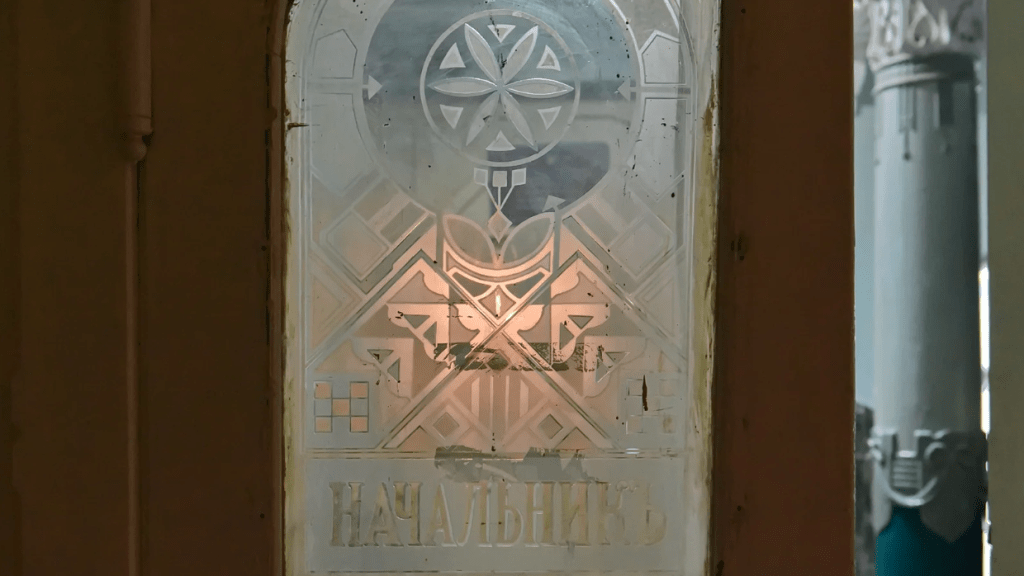
Today, the most eloquent testimony to the functioning of the financial institution here is the layout of the rooms on the third floor. Reinforced interior doors with bolts, spiral staircases, internal cabinets with blinds locked by keys, little doors in openings for passing oversized items between adjacent rooms, and mesh floors — all constructed from metal to ensure secure storage and fire safety. Valuable documents, funds, and policies have now been replaced by library books from the postgraduate medical college.
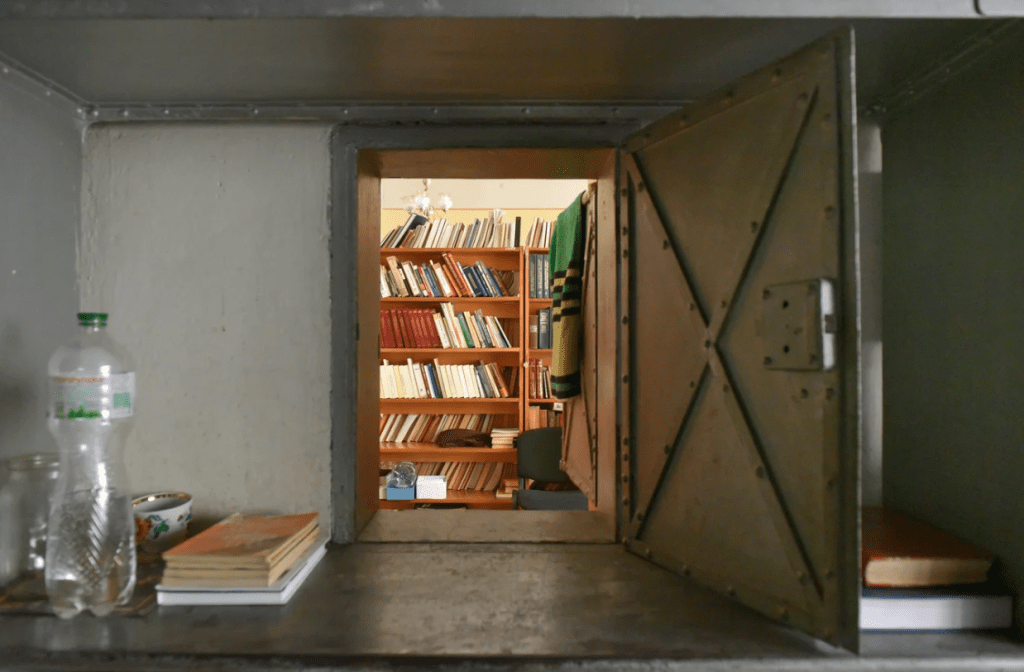

The ground floor of the building houses a sports hall. It once was used by the Sokil-Batko society, whose founders included the aforementioned Vasyl Nahirnyi as well as Volodymyr Lavrivskyi. Now, visitors to the Oleksiy Demianyuk Children and Youth Sports School learn fencing here.
‘Coats of Arms, Candies, Chocolates’
The Dnister building never underwent a comprehensive renovation; instead, various contractors completed the work intermittently. In 2016, funded by the German foundation GIZ, Mykhailo Stefanivskyi’s works were restored — two gates, grilles on four balconies, the windows of the ground floor, and the roof. In November 2018, experts from the company Oberih Group unveiled the murals on the second floor. Despite submitting project and estimate documentation for consideration in the Great Restoration competition, the project was not selected.
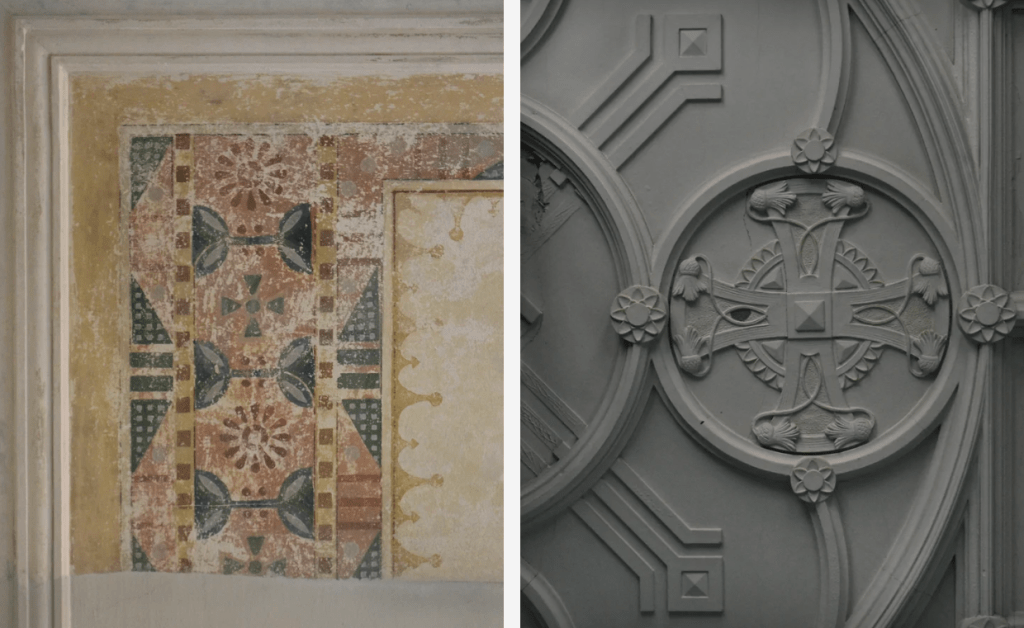
For nearly two years, the main facades were restored, cornices, moldings, window frames, and roofs were reconstructed. The work was carried out by the Volodar-Market enterprise. The renovation of the building aroused enthusiasm among Lviv residents and sparked discussions among experts. In particular, the heraldry researcher Taras Zavadovskyi noted that the coats of arms above the portal on Ruska Street were originally uncolored, only shaded. However, the commissioners claim that the polychrome is justified by natural research. The durability of updates will also serve as a criterion of quality.
While the work on the main facade was in progress, the Creative Factory Victoria worked in the Sokil-Batko hall. There, they restored a fragment of the interior facade, conducted probing to find murals, cleaned and repaired the ironwork, reinforced the wooden stairs, and made copies of wooden windows while preserving the original detailing.
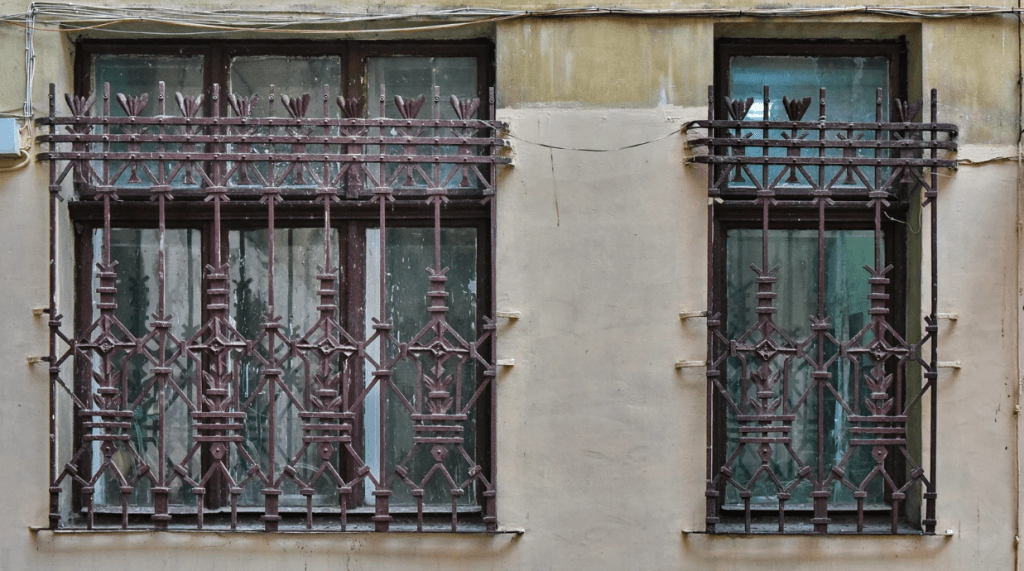
On the facade facing Ruska Street, restorers Andriy Pocheva and Ruslana Herman uncovered a sign bearing the name of the store and of the primary goods they offered: “OWOCARNIA CUKRY CZEKOLADY” with a duplication in Ukrainian “ЦУКОРКИ ЧЕКОЛЯДИ.” The owner was Schtirer, as can be seen from advertisements searching for saleswomen. An article in Dilo from October 1930 mentions that his establishment suffered damage during the disturbances incited by Polish students: “Windows and signs were broken at two Jewish firms, at Schtirer’s shop and Fuchs’s restaurant — obviously only because they, taking into account the Ukrainian clientele, had Ukrainian signs.” The vandalism was “caused by false rumors that Ukrainians set fire to the bleachers at Persenkivka, although it was actually a tar kettle fire that workers accidentally ignited.”
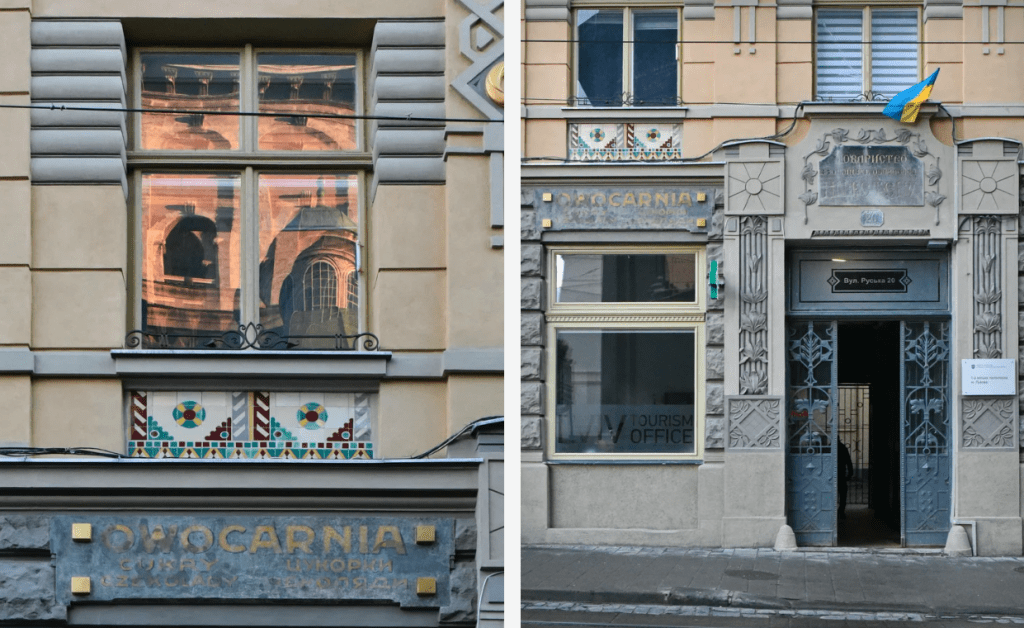
It remains unclear why the decision was made to paint over the sign “Pokoje śniadaniowe” [Breakfast room] to the left of the entrance to the Lviv City Tourism Office. Researchers Ivanna Honak and Ksenia Borodin said that such places specialized in late breakfasts, offering a variety of drinks, and worked from 7 in the morning until midnight. Here trade deals were negotiated and business matters were settled. Such establishments were often called “hendelyky” from “handel” – German for “trade.”
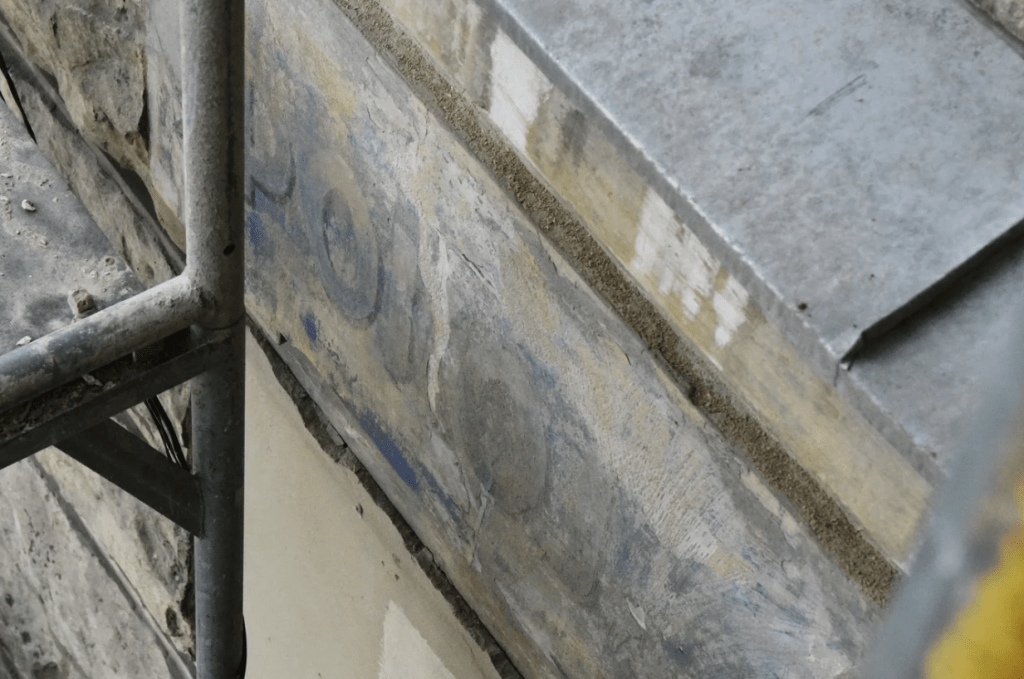
We hope that soon we will witness another comprehensive phase of restoration — of the interior, including the murals, woodwork, plasterwork, stained glass windows, storage with original shelving, and interior facades.
Text and photographs: Yuliya Korytska-Holub
Translated by: Areta Kovalska
Ukrainian version published on Lokalna Istoryia on April 14, 2023
Lokalna Istoriya (Local History) is a Ukrainian-language multimedia online platform about the past and present of Ukraine

